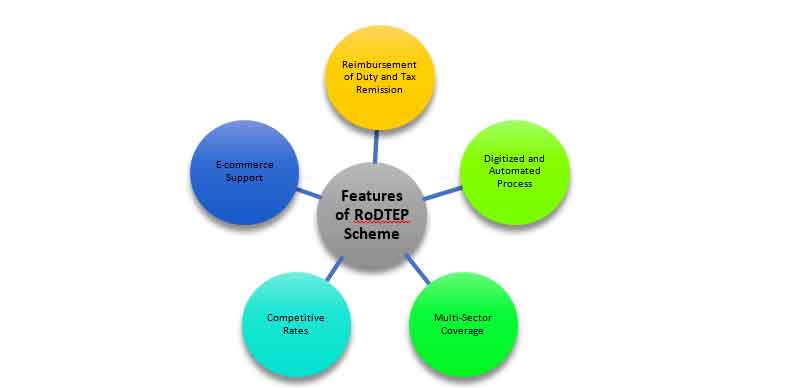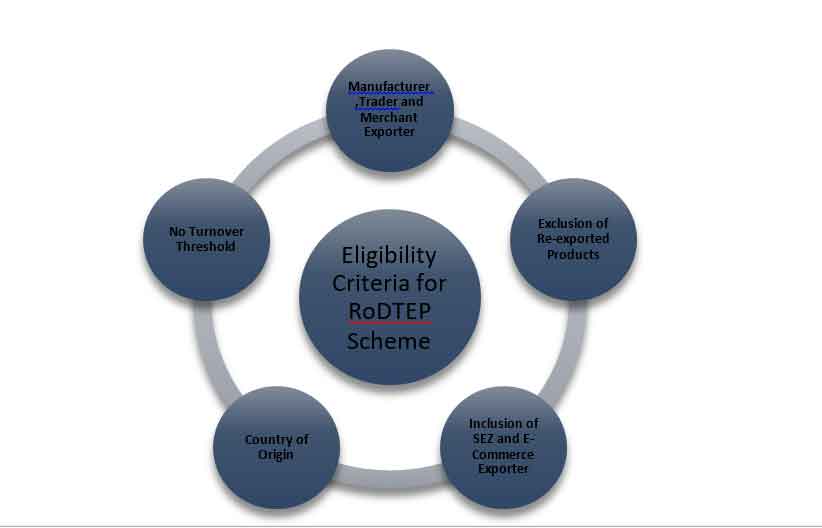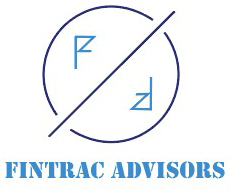Export Incentives Scheme: Remission of Duties and Taxes on Exported Products (RoDTEP)

Vikash Kumar Surana
Vikash Kumar Surana is a Qualified Company Secretary, Associate Member of CISI UK, and Founder of THE FINOPS Services (est. 2017). With 15+ years of expertise in indirect taxation (GST, Excise, VAT, DGFT, MSME subsidies like PLI, RODTEP), he specializes in tax strategy, litigation, and compliance across industries like manufacturing, ports, steel, and healthcare.
Background and Need for the RoDTEP Scheme
The Remission of Duties and Taxes on Exported Products (RoDTEP) scheme, implemented on January 1, 2021, has transformed India’s export incentives framework by refunding previously non-recoverable embedded taxes and duties.
The RoDTEP Scheme was announced in a press release on December 31, 2020, to replace MEIS, and it took effect on January 1, 2021, for all export items. Furthermore, end-to-end digitalization will be used to implement the scheme. Exporters will be reimbursed under the RoDTEP mechanism for embedded duties and taxes that remain unreimbursed.
The United States challenged India’s major export subsidy programs at the World Trade Organization (WTO), arguing that they harmed American workers. A WTO dispute panel decided against India, finding that the government of India’s export subsidy programs were in violation of the trade body’s rules. As a result, the RoDTEP Scheme was created to guarantee India’s continued WTO compliance.
The following export subsidy programs were recommended for discontinuation:
- India’s Merchandise Exports Scheme
- Scheme for Parks for Electronics Hardware Technology
- Parks for Biotechnology
- Capital Goods Export Promotion Scheme
- Special Economic Zones (SEZ) scheme
- Program for Duty-Free Imports for Exporters
Understanding the RoDTEP Scheme Frame and Benefits
The RoDTEP scheme framework for DTA Units has been extended by the government until September 30, 2025, and for AA/EOU/SEZ Units until December 31, 2025. This plan is backed by a budget of ₹23,922 crores for FY 2024–25. Recent modifications eliminated 13 old tariff lines and established 39 new tariff lines at the 8-digit level. This framework now includes previously unrefunded taxes, such as VAT, excise duty on gasoline, electricity charges, and several local levies.
The Department of Revenue oversees the implementation of the entire scheme. Any lingering concerns are handled by a special RoDTEP Policy Committee (RPC) under the direction of DGFT. This well-designed approach aids in the methodical distribution of advantages while adhering to global trade standards.
Benefits of the RoDTEP Scheme
- Relief from Cascading Taxes: RoDTEP alleviates the cumulative incidence of indirect taxes across the production and distribution value chain, simplifying the process through a single RoDTEP claim.
- Incentive for Exporting Services: RoDTEP includes services exports like IT, health, and education, marking a significant development in the support for service-oriented sectors. Service providers can claim refunds on taxes related to input services, boosting their global competitiveness.
- Benefits for the SME Sector: RoDTEP encourages SME exporters by offsetting the impact of domestic taxes, providing them with a level playing field to compete in international markets.
Features & Eligibility Criteria of RoDTEP Scheme (RoDTEP)

- Reimbursement of Duty and Tax Remission: The scheme provides refunds on Central, State, and local duties/taxes/levies that are not already covered by other duty remission schemes. This includes taxes like Mandi tax, VAT, Coal cess, and Central Excise duty on fuel, among others.
- Digitized and Automated Process: The scheme utilizes a fully digital platform for quick verification and processing of refunds. Refunds are issued as transferable electronic scrips, which are maintained and tracked through an electronic ledger.
- Multi-Sector Coverage: The RoDTEP scheme is designed to be inclusive, covering a wide range of sectors, including agriculture, textiles, and electronics.
- Competitive Rates: The scheme offers refunds at competitive rates, taking into account the nature of the goods exported.
- E-commerce Support: The scheme also benefits exporters using e-commerce platforms, ensuring inclusivity.

Compliance and Documentation for RoDTEP Scheme
To avail of RoDTEP refunds, exporters need to follow these steps:
- Registration on the Customs Portal: Exporters must first register on the Indian Customs ICES (Indian Customs Electronic Gateway) portal to access various customs-related services, including submitting documents for RoDTEP claims.
- Declaration on Shipping Bill: At the time of exporting goods, exporters need to declare on the shipping bill that they intend to claim RoDTEP benefits. This declaration is a mandatory step that ensures the goods are eligible for a Without this declaration, the RoDTEP claim may not be processed.
- Submitting Export Details: Post-export, exporters must submit relevant details online through the customs system, including the Export General Manifest (EGM) and the shipping bill. This submission is crucial for customs to verify that the goods have been exported as per the declaration, enabling the processing of the RoDTEP claim.
- RoDTEP Scroll Generation: Once the shipping bill is processed, the ICES system (ICEGATE & DGFT) calculates the applicable RoDTEP refund and generates a scroll—a document summarizing the refund amounts for different shipping bills. This scroll acts as an official record of the amount due to the exporter under the RoDTEP scheme.
- e-Scrip Account: Exporters can receive their RoDTEP refund either as a direct transfer to their bank account or as an e-scrip in their credit ledger account on the customs portal. An e-scrip is a digital credit that can be used to pay future customs duties, offering flexibility in managing the refund or selling the E-scrip to the
Escrip Account creation and Scrip generation
1. E-scrip Account Creation: Escrip account can be used by the Importer/Exporter/CHA only after creating it at ICEGATE. Below are the steps to create an Escrip Account with ICEGATE.
- Users can select the option of Escrip account creation by clicking on the “Escrip” tab under the “Our Services” section of https://www.icegate.gov.in/
- The user will be directed to the login page. After logging in using valid credentials, the user will be able to see the escrip option under Financial Services on the left panel as shown below. If a user is not registered they can get themselves registered as per advisory through this link: https://icegate.gov.in/Download/JavaSetupForDSC.pdf
- Since the user has not created an escrip account initially, the following page will be displayed. The user can select the scheme name from the drop-down as RoSCTL or RoDTEP and click on Create Escrip.
- The user creates an escrip account, a grid view with the following details will be displayed to the user. Users can perform various operations mentioned as follows from this Home Page: • SB Details • Scrip Details • Transaction Details • Scrip Transfer • Approve Scrip Transfer • Add Scheme
2. Scrip Generation: To claim RoDTEP (Remission of Duties and Taxes on Exported Products) benefits, exporters should follow these steps:
- From the Escrip Home Page, the user can select the SB Details Tab for scrip generation.
- The user can select shipping bills or scrolls for scrip generation. Users can select RoSCTL or RoDTEP under the scheme name and location.
- The user can view and select the shipping bills, then click on the ‘Generate Scrip’ button to generate a scrip. User can select all the shipping bills at once by checking box in first row.
- Scrip will be generated for the selected shipping bill/ scroll. After successful Scrip Creation.
Annual RoDTEP Return (ARR) Requirement
In respect of the aforesaid scheme, recently DGFT issued Public Notice No. 27/2024-25 dated October 23, 2024. The aforesaid notice brings a mandatory requirement of filing an Annual RoDTEP Return (‘ARR’) filing for exporters claiming benefits over INR 1 crore in a financial year under the RoDTEP Scheme.
This return is essential for verifying the actual taxes and duties that exporters incur during the production of exported goods. The ARR must be filed by March 31 following the financial year, with a grace period until June 30 for late submissions. For the first year, the ARR for FY 2023-24 must be submitted by March 31, 2025.
Key Compliance Points for ARR
- Mandatory Submission: Exporters claiming RoDTEP benefits exceeding INR 1 crore must submit the ARR via the DGFT portal.
- Penalties for Non-Compliance: Exporters who delay the submission of the ARR beyond March 31 may file it by June 30 with a composition fee of INR 10,000. For filings post-June 30, the fee doubles to INR 20,000.
- Suspension of Claims: Failure to file the ARR on time results in the suspension of RoDTEP benefits.
- Record Retention: Exporters must maintain records for at least five years to support their duty remission claims.
- Risk-Based Scrutiny: The RoDTEP Committee may review filings, and discrepancies may lead to refunds or adjustments to claims.
Concluding Thoughts
The RoDTEP scheme plays a vital role in enhancing the competitiveness of Indian exports by ensuring that embedded duties and taxes are refunded, bringing India in line with global trade practices. The introduction of the Annual RoDTEP Return (ARR) requirement adds a layer of compliance, ensuring that exporters’ claims reflect the actual duty burdens faced in the production process.
Disclaimer
The content published on this blog is for informational purposes only. The opinions expressed here are solely those of the respective authors and do not necessarily reflect the views of Fintrac Advisors. We make no warranties regarding the completeness, reliability, or accuracy of this information. Any action you take based on the information presented on this blog is strictly at your own risk, and we will not be liable for any losses and damages in connection with its use. We recommend seeking professional expertise for any such work. External links on our blog may direct users to third-party sites beyond our control. We do not take responsibility for their nature, content, or availability.


